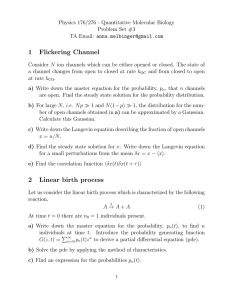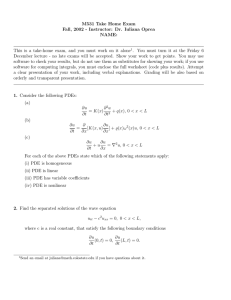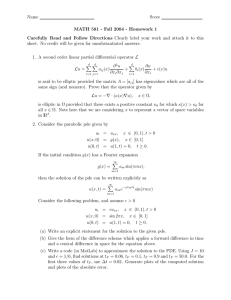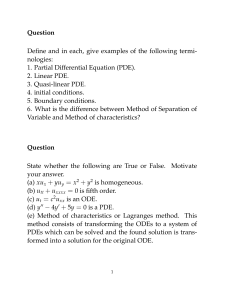Problem 2a: Parabolic PDE
advertisement
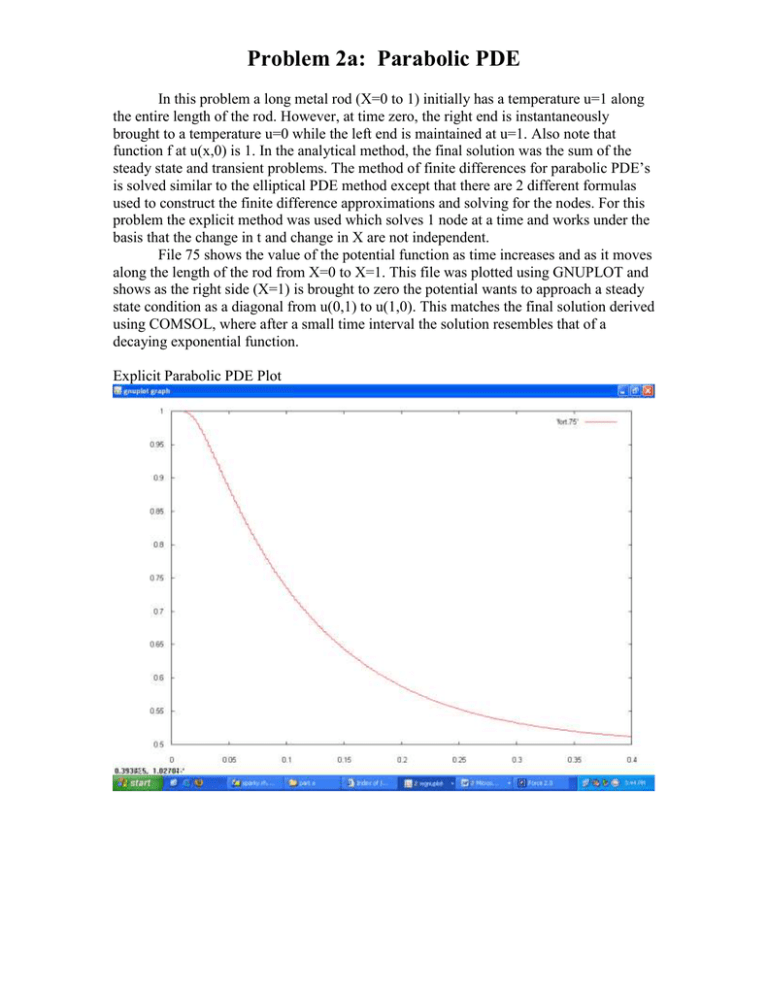
Problem 2a: Parabolic PDE In this problem a long metal rod (X=0 to 1) initially has a temperature u=1 along the entire length of the rod. However, at time zero, the right end is instantaneously brought to a temperature u=0 while the left end is maintained at u=1. Also note that function f at u(x,0) is 1. In the analytical method, the final solution was the sum of the steady state and transient problems. The method of finite differences for parabolic PDE’s is solved similar to the elliptical PDE method except that there are 2 different formulas used to construct the finite difference approximations and solving for the nodes. For this problem the explicit method was used which solves 1 node at a time and works under the basis that the change in t and change in X are not independent. File 75 shows the value of the potential function as time increases and as it moves along the length of the rod from X=0 to X=1. This file was plotted using GNUPLOT and shows as the right side (X=1) is brought to zero the potential wants to approach a steady state condition as a diagonal from u(0,1) to u(1,0). This matches the final solution derived using COMSOL, where after a small time interval the solution resembles that of a decaying exponential function. Explicit Parabolic PDE Plot

